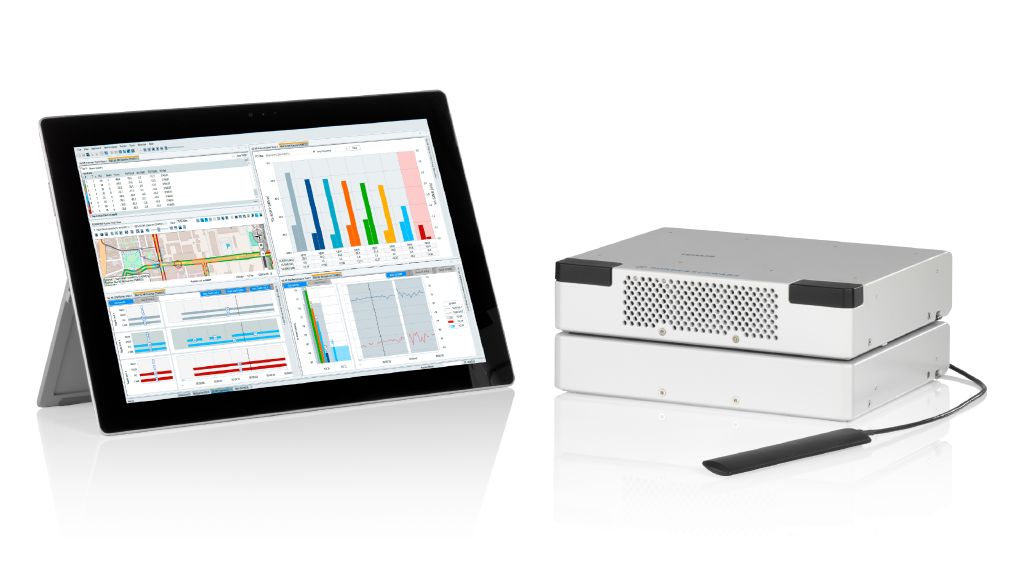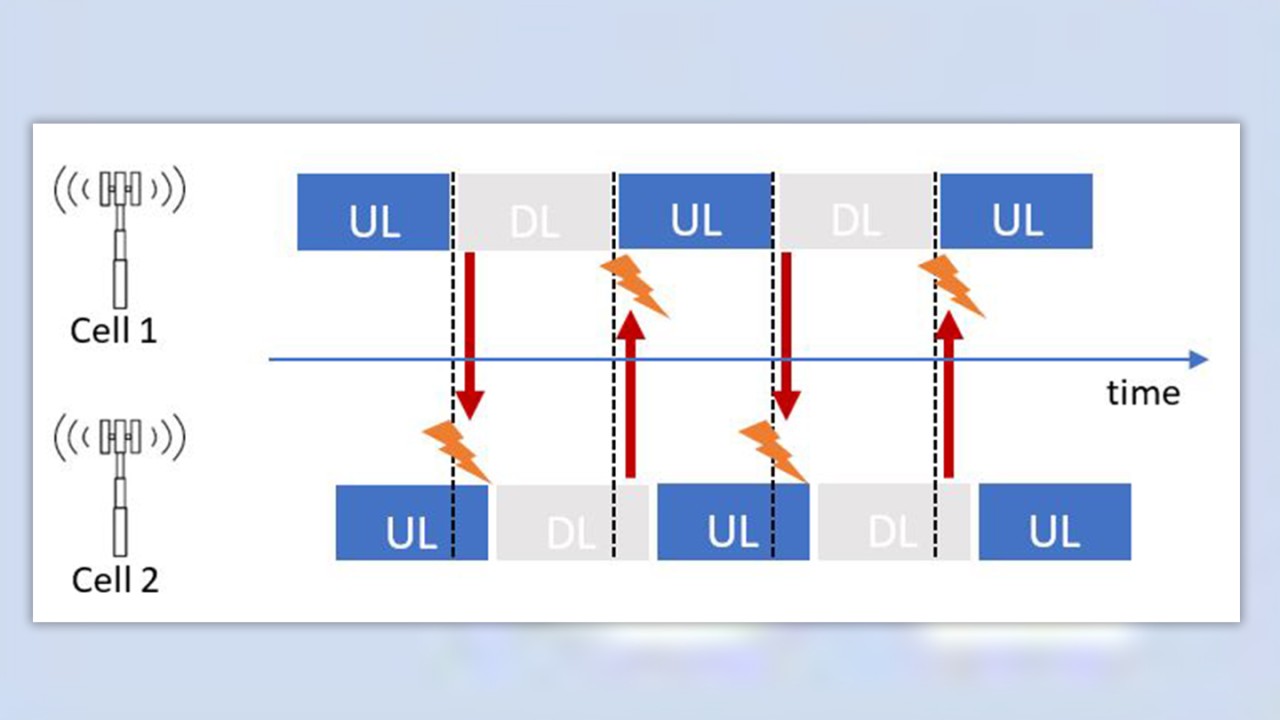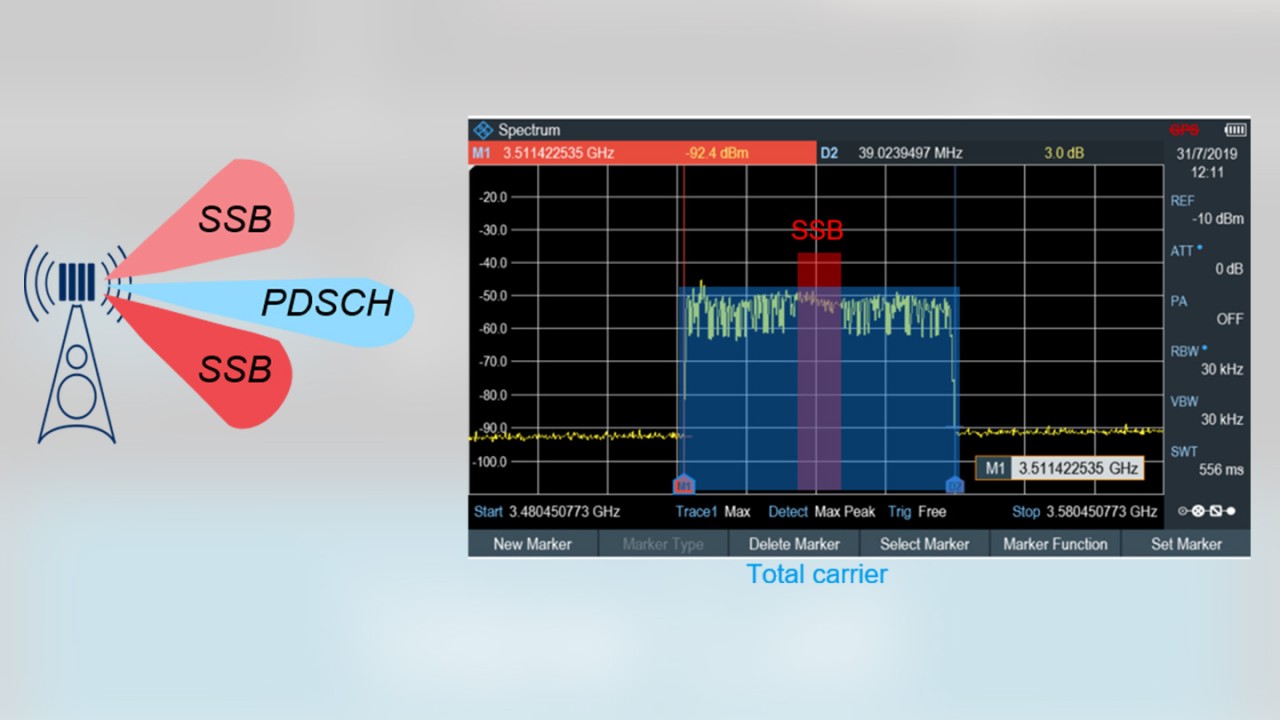Written by Corbett Rowell | June 23, 2022
I. Introduction
Fifth generation (5G) wireless radio access technology, also known as New Radio (NR), contains more flexibility in order to address different usage scenarios [1], [2], [3]. The 5G NR specification allows optimization to reduce the latency and to significantly increase the data rate. These optimizations require many new technology components including new frequency bands, beamforming support for synchronization/broadcast, and multi-connectivity in order to allow the combination of 5G network elements with 4G standard Long-Term Evolution (LTE). 5G NR supports operation in two frequency ranges: frequency range 1 (FR1) (below 7125MHz [4]) and in millimeter-wave bands (FR2), e.g. between 24250MHz and 52600MHz [5].
Throughout the entire chain of lab testing, field trials, network rollout, optimization, and benchmarking, measurement tools for mobile network testing (MNT) are required in order to characterize the conditions of the wireless channel and the network coverage in the field [6], [7]. For example, measurements of the received power allow verification of 5G NR cell beamforming and its impact on the coverage area (Figure 1).
Measurements of the channel impulse response result in deeper knowledge about the propagation of wireless signals in different environments (i.e. reflection, absorption, and scattering in urban versus rural areas). Furthermore, measurements of arrival times allow to verify network synchronization aspects, as illustrated in Figure 2 [8].
5G and the associated technologies such as beamforming and frequencies above 3GHz have raised potential health concerns due to the human exposure to the electromagnetic field (EMF) of base stations (Figure 3). Consequently, the 5G base station deployment requires that the electrical field strength [V/m] is below the country-specific threshold. Frequency selective measurements methods of the exposure to 5G base stations were described in [9], [10]. Moreover, the need for code selective measurement methods was emphasized, especially in networks with several base stations and with data traffic.
A mobile network operator needs to evaluate the quality of the network in order to investigate network problems, unwanted interference, or assessment of new base stations. While it is possible to evaluate the performance of the network using a mobile phone, the disadvantage of using mobile phones is measurement variation as results vary depending on the chip-set or installed software. Therefore, a reference measurement device such as a receiver or scanner is required, providing a common ground for comparison. With the use of non-stand-alone (NSA) and dynamic shared spectrum (DSS), there is the need to measure 5G NR FR1 and the corresponding LTE channel at the same time to ensure that both network links are working as expected. Detection and measurement of these base station cells is challenging, because the measurement needs to achieve a high sensitivity while avoiding false alarms that result in the detection of non-existing cells (ghost codes).
Measurement of the carrier frequencies of a mobile network allows independent characterization of the network and together with a wide-band passive receiver, enables benchmarking of different networks (even for networks that are completely unknown), removing the influence of the mobile phone. As this measurement approach is completely passive, all public and private networks (i.e. campus networks), can be detected and measured.
This set of blog posts will describe the mobile network testing approach for 5G NR with a passive scanne which measures synchronization signal (SS)/ physical broadcast channel (PBCH) blocks (or SSBs) broadcasted from 5G NR base stations. In the next blog post, we will present relevant background information about 5G NR and mobile network testing together with our measurement setup and methodology. Subsequent blog posts will address individual challenges and their solutions with measurements results of real networks. Challenges include: finding carrier frequencies with SSBs, network synchronization, code selective electromagnetic field strength measurements, base station position estimation, and the effect of measurement antenna patterns on mobile network testing.
If you have suggestions on other challenges you would like for our team to solve, feel free to email your favorite R&S contact.
Learn more about 5G site acceptance scenarios, KPIs, test techniques, and field measurement results and watch the on-demand Webinar “5G Site Testing including latest real world challenges”.
References
[1] X. Lin et al., 5G New Radio: Unveiling the Essentials of the Next Generation Wireless Access Technology, IEEE Communications Standards Magazine, Sep 2019
[2] S. Ahmadi, 5G NR: Architecture, Technology, Implementation, and Operation of 3GPP New Radio Standards, Academic Press, 2019
[3] M. Kottkamp, A. Pandey, D. Raddino, A. Roessler and R. Stuhlfauth, 5G New Radio: Fundamentals, procedures, testing aspects, Rohde & Schwarz, 2019
[4] 3GPP TS 38.101-1, NR; User Equipment (UE) radio transmission and reception; Part 1: Range 1 Standalone, V16.8.0, June 2021
[5] 3GPP TS 38.101-2, NR; User Equipment (UE) radio transmission and reception; Part 2: Range 2 Standalone, V16.8.0, June 2021
[6] A. Sibila, 5G NR network rollout is now - let’s test!, MWee RFmicrowave, July 2019
[7] M. Mielke and M. Hylen, 5G NR Network Measurements using Network Scanners and Advanced Data Analytics, Version 3.0, Application Note, Rohde & Schwarz, April 2019
[8] S. Rufini, M. Johansson, B. Pohlman and M. Sandgren, 5G Synchronization Requirements And Solutions, Ericsson Technology Review, Jan 2021
[9] S. Aerts et al., In-situ Measurement Methodology for the Assessment of 5G NR Massive MIMO Base Station Exposure at Sub-6 GHz Frequencies, IEEE Access, vol. 7, 2019
[10] C. Bornkessel, T. Kopacz, A. M. Schiffarth, D. Heberling and M. A. Hein, Determination of Instantaneous and Maximal Human Exposure to 5G Massive-MIMO Base Stations, 15th European Conference on Antennas and Propagation (EuCAP), 2021
Read more about "5G mobile network testing using a passive scanner" part 2 - 4 of this series:
5G mobile network testing using a passive scanner (part 2)
5G mobile network testing using a passive scanner (part 3)
5G mobile network testing using a passive scanner (part 4)













